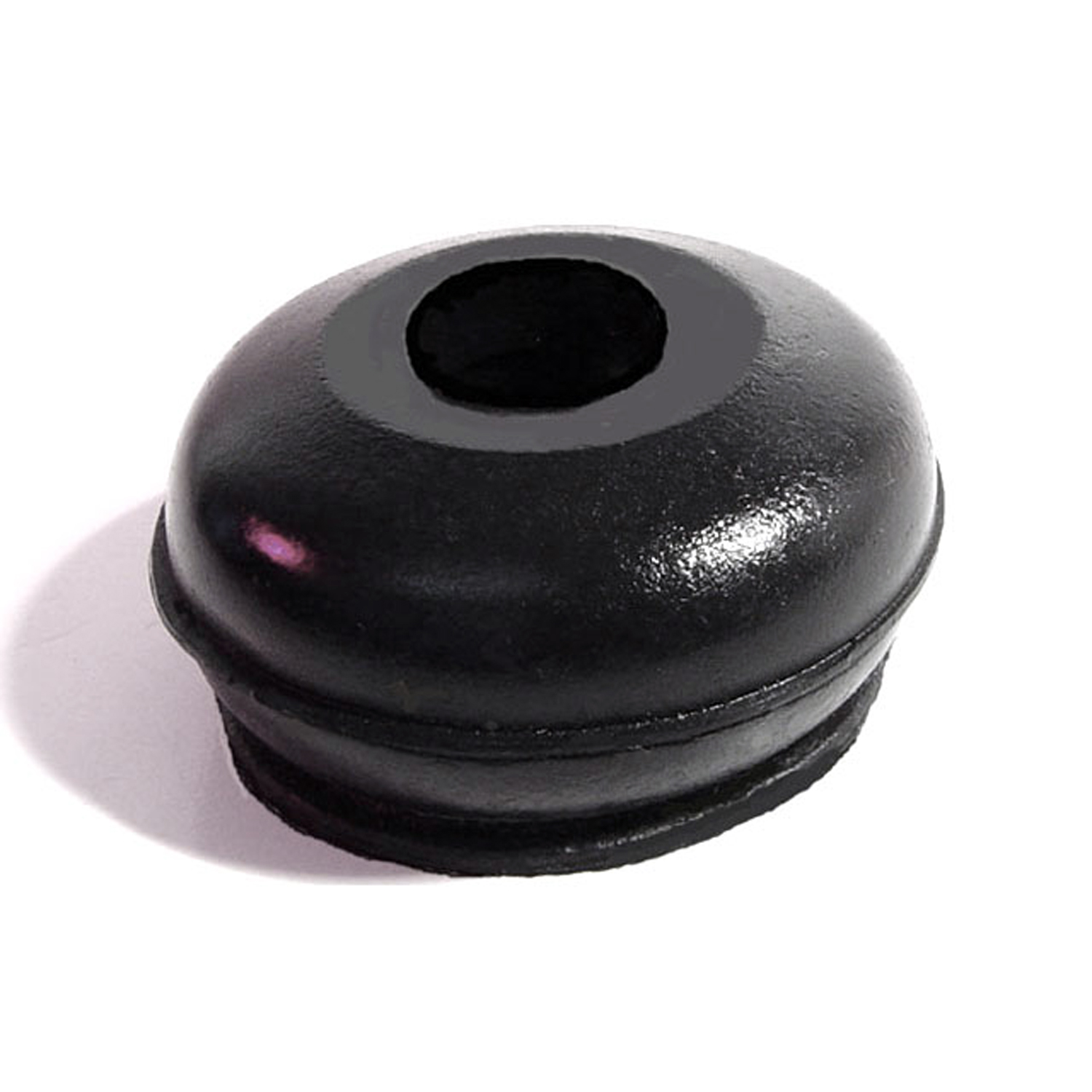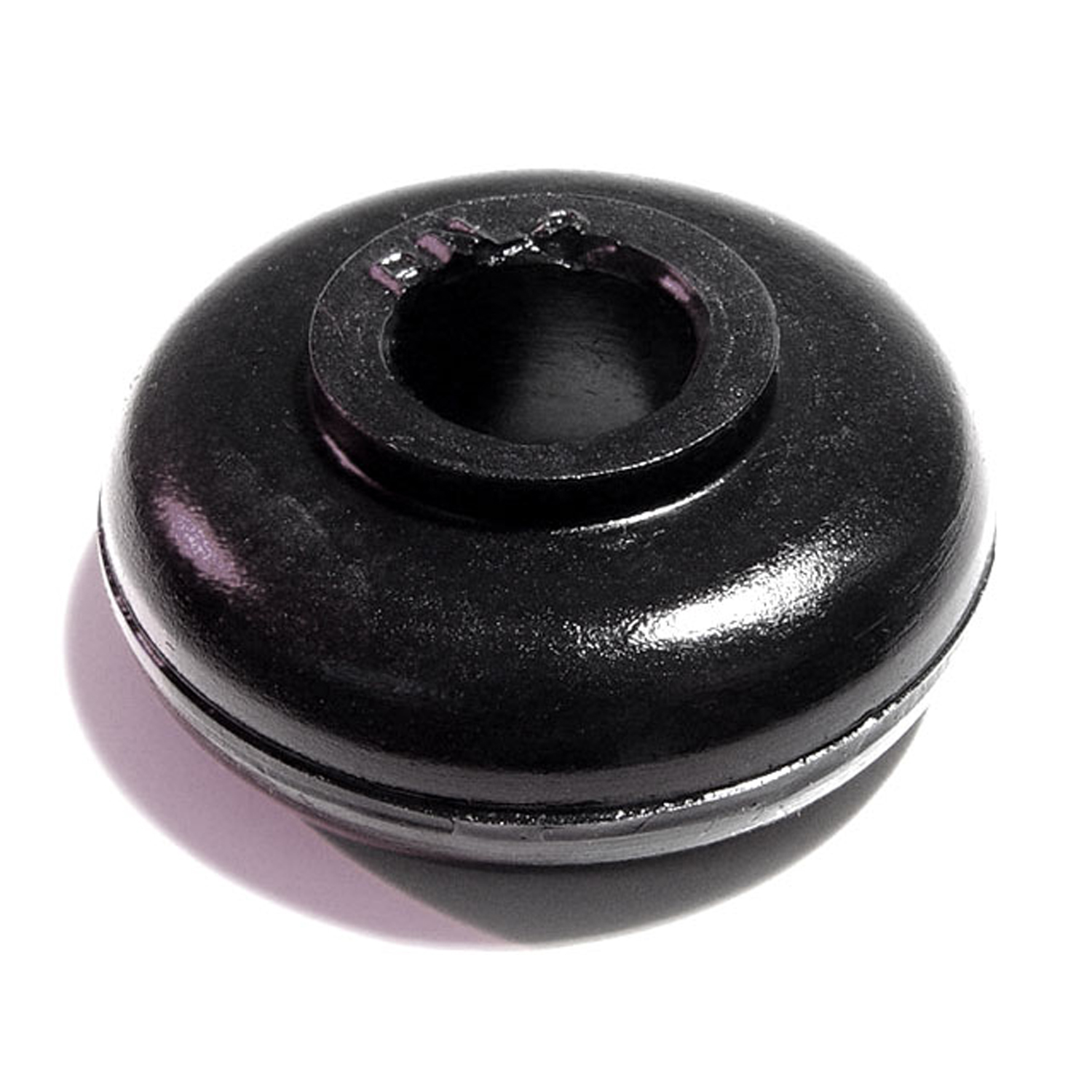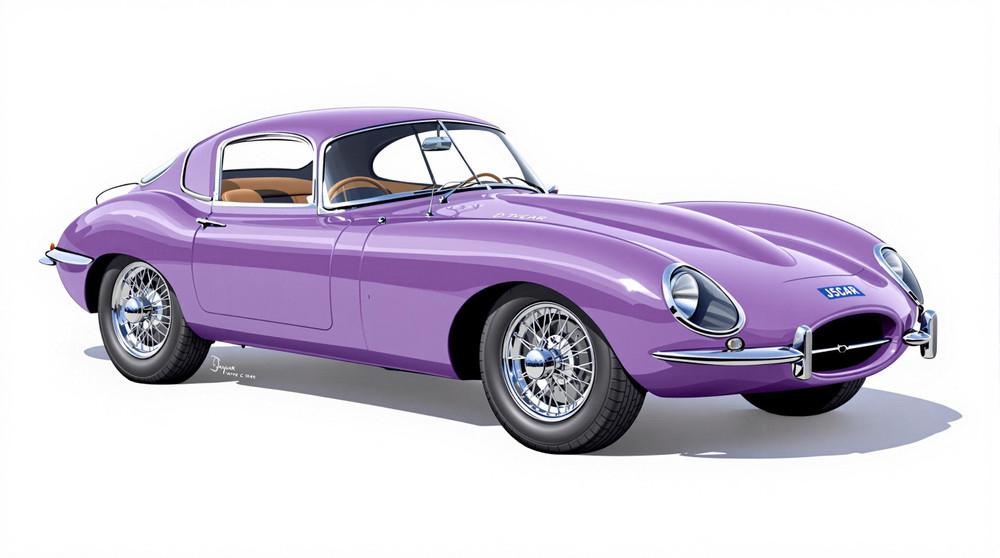Image of 1954 Jaguar D-Type, Note: These illustrations use artistic license and may differ from actual historical models.
Performance Metrics
Fundamental Metrics
Emotional Appeal
MMP Rating
| Engine Specifications | |
|---|---|
| Engine: | XK I6 |
| Displacement: | 3.4L |
| Horsepower: | 250 hp |
| Torque: | 242 lb-ft |
| Compression Ratio: | 9.0:1 |
| Ignition System: | Lucas ignition system |
| Cooling System: | Water-cooled |
| Performance Specifications | |
| 0-60 Time: | 4.7 seconds |
| 1/4 Mile Time: | 13.3 seconds |
| Top Speed: | 162 mph |
| Transmission and Drive | |
| Drive Type: | Rear-wheel drive |
| Transmission Type: | 4-speed manual |
| Fuel and Efficiency | |
| Fuel System Type: | Triple Weber carburetors |
| MPG: | Not available due to the age and type of the vehicle |
| Dimensions and Brakes | |
| Brakes: | Disc brakes |
| Wheelbase: | 90 inches |
| Weight: | 2,100 lbs |
Note: Specifications for classic cars are given to the best of our ability, considering the limited and variant data available.
Unveiling the 1954 Jaguar D-Type: A Masterpiece of Speed and Style
The 1954 Jaguar D-Type not only turned heads with its sleek design but also redefined performance in the sports car arena. Born from the illustrious lineage of Jaguar Cars Ltd, this British marvel emerged as a purpose-built racing machine, crafted to conquer the prestigious Le Mans 24 Hours race. The D-Type's inception was a response to the evolving automotive landscape of the 1950s, where competition and innovation were accelerating at breakneck speeds. A notable moment in its history was its triumphant victory at Le Mans in 1955, 1956, and 1957, cementing its status as a racing legend.
Design and Innovation: A Leap into the Future
The exterior of the Jaguar D-Type was a symphony of aerodynamic efficiency and aesthetic grandeur. Its aviation-inspired bodywork, complete with a distinctive fin behind the driver's seat, was sculpted to slice through air with minimal resistance. The interior was a testament to function over form, with a spartan layout that prioritized weight savings and race-readiness. Despite this, the quality of materials remained uncompromised, featuring aluminum panels and a minimalist dashboard that exuded purpose. Technologically, the D-Type was ahead of its time. It boasted a monocoque chassis construction, which enhanced rigidity while reducing weight. The car came in a palette of colors, though British Racing Green became synonymous with its racing pedigree. Among body styles, it was the open-top roadster that captured imaginations and became an icon on both track and street.
Historical Significance: Shaping the Automotive Landscape
The Jaguar D-Type's influence extended far beyond its victories on the circuit. It introduced concepts such as aerodynamic design and monocoque construction into mainstream automotive consciousness. These innovations would go on to shape the future of car manufacturing. The D-Type stood out not just for its speed but for its forward-thinking approach to car design—a legacy that continues to inspire engineers and designers alike.
Performance and Handling: Engineering Excellence Unleashed
At its heart lay a powerful 3.4-liter straight-six engine that propelled the D-Type to an impressive top speed of over 170 mph—a staggering figure for its time. Acceleration from 0-60 mph was achieved briskly in just over 4 seconds, showcasing its prowess off the line. On track or open road, handling was precise and responsive; drivers reported an almost telepathic connection with the car as it navigated corners with poise and agility. The roar of the engine coupled with the visceral sensation of speed made driving a D-Type an unforgettable experience.
Ownership Experience: Beyond the Checkered Flag
While primarily built for competition, some D-Types found their way into private hands as road cars or weekend racers. Maintenance required a knowledgeable hand—after all, this was no ordinary vehicle—but many owners reveled in the hands-on experience. Reliability was commendable for a race-bred machine, though parts could be scarce and costly.
Fun Facts: The D-Type's Legacy in Lore
The Jaguar D-Type is rife with trivia that adds to its mystique. For instance, only around 75 units were produced during its initial run, making it exceedingly rare today. Celebrity enthusiasts like Steve McQueen were known to have admired or owned these machines. Criticisms were few but often pointed towards its uncompromising nature as a thoroughbred racer not suited for casual driving.
Collector's Information: A Coveted Jewel in Automotive Crowns
Today, a well-preserved Jaguar D-Type can command prices well into the millions at auction—testament to its desirability among collectors. Rarity is unquestionable; each surviving example is a treasured piece of history with values consistently appreciating over time due to their limited numbers and significant heritage.
Conclusion: The Immortal D-Type
In summary, the 1954 Jaguar D-Type stands as one of history's most influential sports cars—a paragon of innovation, performance, and style that transcended its era to become timeless. Its story is one of triumphs etched not only on silver trophies but also in the annals of automotive greatness.
1954 Jaguar D-Type Catalog of Parts
 1954 Jaguar D-Type Upper and Lower Ball Joint Boot. 5/8" upper I.D-BN 101-AUpper and Lower Ball Joint Boot. 5/8" upper I.D., 1-1/2" bottom I.D., 7/8" high. Each
1954 Jaguar D-Type Upper and Lower Ball Joint Boot. 5/8" upper I.D-BN 101-AUpper and Lower Ball Joint Boot. 5/8" upper I.D., 1-1/2" bottom I.D., 7/8" high. Each 1954 Jaguar D-Type Roll Bar Bushing. 1/2" high, with 1/2" hole. Each-BN 2Roll Bar Bushing. 1/2" high, with 1/2" hole. Each
1954 Jaguar D-Type Roll Bar Bushing. 1/2" high, with 1/2" hole. Each-BN 2Roll Bar Bushing. 1/2" high, with 1/2" hole. Each 1954 Jaguar D-Type Auto Brake Pedal Pad. 3-1/4" wide X 5-1/2" long. Each-CB 75-BAuto Brake Pedal Pad. 3-1/4" wide X 5-1/2" long. Each
1954 Jaguar D-Type Auto Brake Pedal Pad. 3-1/4" wide X 5-1/2" long. Each-CB 75-BAuto Brake Pedal Pad. 3-1/4" wide X 5-1/2" long. Each 1954 Jaguar D-Type Spark plug wire boot. Exclusive Metro part-RP 1-KSpark plug wire boot. Exclusive Metro part. Fits on the distributor cap end. Note: looks similar to coil boot, but is physically smaller. Replaces OEM# CO 2609. Each.
1954 Jaguar D-Type Spark plug wire boot. Exclusive Metro part-RP 1-KSpark plug wire boot. Exclusive Metro part. Fits on the distributor cap end. Note: looks similar to coil boot, but is physically smaller. Replaces OEM# CO 2609. Each.Why Choose Metro?
For over 100 years, Metro Moulded Parts has been the pinnacle of quality in classic car restoration parts. Our commitment to precision and authenticity in every component ensures a perfect fit and an OEM-level appearance.
- Expert Craftsmanship & Quality: Each part is a testament to our dedication to reliability and perfection, crafted from original designs and thoroughly tested.
- Advanced Technology: We use cutting-edge techniques to create flawless, long-lasting parts that surpass others in performance.
- SuperSoft Sponge – The Ultimate Door Seal: Not only are our door seals 30% softer than competitors', but they're also guaranteed to never leak. They effectively reduce wind and road noise, enhancing your classic car's comfort and driving experience.
- Proudly American: Our parts are a product of American craftsmanship, made in the USA with a spirit of excellence and heritage.
- Unrivaled Warranty: We back our products with a 30-year industry-leading warranty, a testament to our confidence in their quality.
Join us in preserving the legacy of classic cars with parts that are crafted for perfection, not just made.

